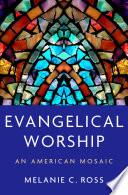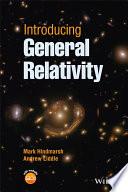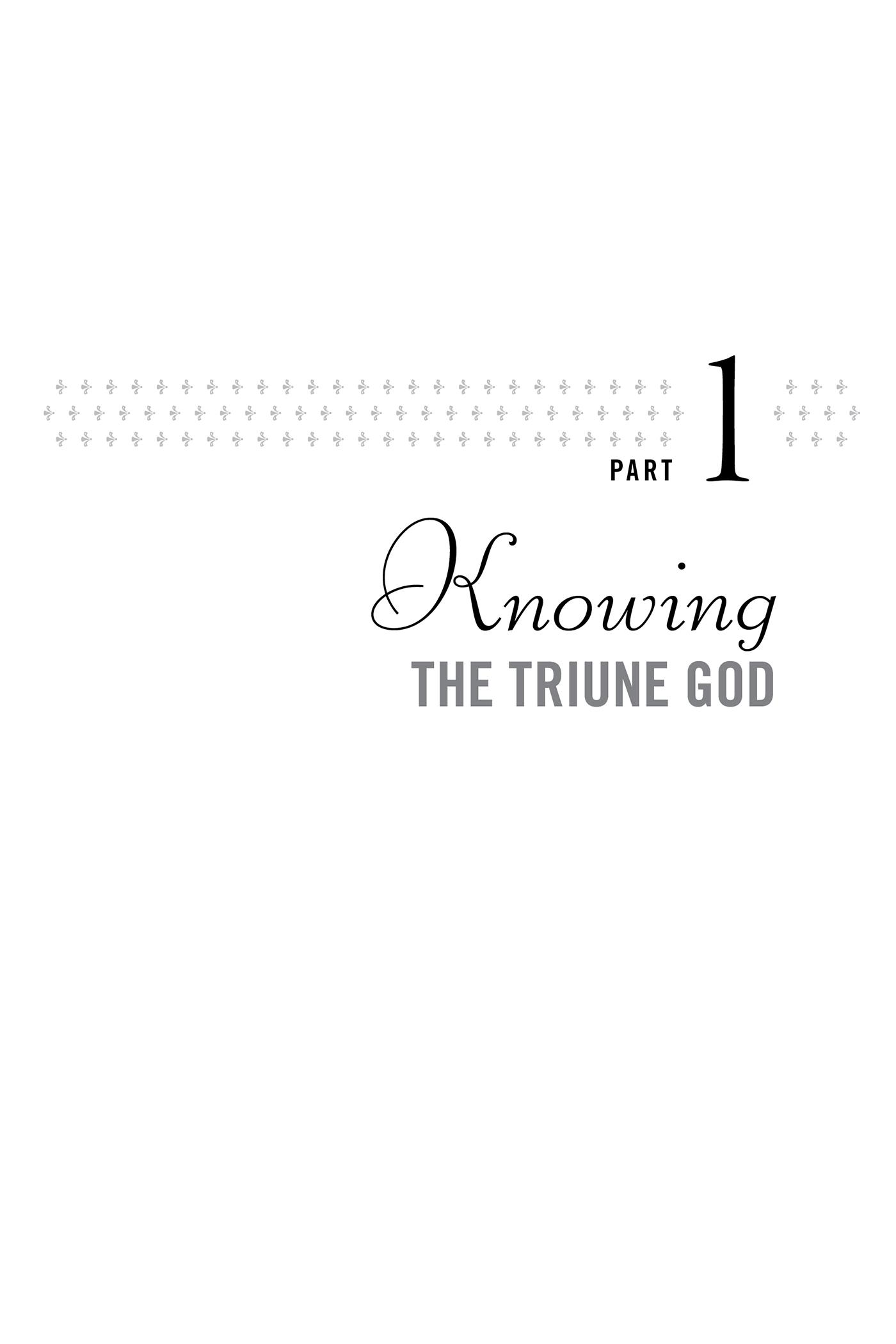Acknowledgments
Therootsof thisbookbeginwiththeseedsof biblical faiththat my parentsandgrandparentsplantedinmyformativeyears.Professorsand peersnurturedthisfaithinmyyoungadulthood.Mentorsandfriendshave constantlystrengtheneditsroots.Deepthankstothemanypeoplewho prayfor meandsupport myvocation.Thisparticular project received helpful exhortationsandvital encouragement from Michael Allen,Mark Bowald,KevinHector,BethFelker Jones,KellyKapic,TimothyLarsen, Scott Swain,andKevinVanhoozer.
Thankstofriendlycolleagues,faithful students,andsupportive administratorsat WheatonCollege,whohavehelpedmetofindmy theological voice; needingspecial mentionfrom thepast areJeff Greenman,MarkHusbands,AlanJacobs,Roger Lundin,MarkNoll, DennisOkholm,andAshleyWoodiwiss.Seventeenother colleaguesjoined meinasurveycourseonChristiandoctrineduring2014–15,fundedbythe FaithandLearningprogram.Their graciousinteractionmadethepresent bookmuchbetter thantheteachingnotesthat legionsof students previouslyencountered.
ThebookalsoimprovedthankstoSundayschool interactionat my homechurch,Immanuel PresbyterianinWarrenville,Illinois,wherewe havetackledmaterial from thefirst fewchapters.For adecade,Pastor GeorgeGarrisonhasfaithfullyproclaimedtheprimacyof JesusChrist, whichI hopehasleft amarkonthisbook.Inaddition,theCreationProject Regional Discussiongroupat TrinityEvangelical DivinitySchool promptedmetorevisethesixthchapter; Sharm Davy,whom I met at an Evangelical Theological Societymeeting,challengedmetorevisethe treatment of angelsanddemons; andTom McCall graciouslyansweredmy eleventh-hour pleafor troubleshootingonthedoctrineof sinand refinementsregardingWesleyantheology.
Other friendswhosecomprehensivereadingimprovedthemanuscript includecolleaguesMarcCortezandJonLaansma,alongwithseveral graduatestudents: CraigHefner,DustynKeepers,TyKieser,Jeremy
Mann,andNimrodTica.GerardoCorpeño,MichelleKnight,andChris Smithmadehelpful commentsonparticular portions.KatherineGoodwin, DustynKeepers,TyKieser,JeremyMann,andAnnaWilliamsprovided crucial researchhelpduringthewritingprocess.Longago,BarryJones andDarrenSariskydraftedhelpful researchfor mycoursenotes.
Muchof what I learnedfrom professors,pastors,theBasement Boys, andtheDeadTheologiansSocietyhasundoubtedlymadeitswayintomy teaching.Inmyearliest years,SteveSpencer andKevinVanhoozer shared their coursenotesliberally,andI borrowedfrom them gratefully.I have acknowledgedspecificdebtsthat I canremember,but noset of footnotes couldfullyidentify,let alonerepay,what I owe.
For permissiontoreusepreviousmaterial,thanksto:
1.InterVarsityPress: (a) Portionsof chapter 14appearedpreviouslyin “WhoIstheChurch?,”in Theology Questions Everyone Asks,edited byGaryM.BurgeandDavidLauber,156–67.Copyright ©2014by GaryM.BurgeandDavidLauber.Usedbypermissionof InterVarsityPress,P.O.Box1400,DownersGrove,IL60515,USA. www.ivpress.com.(b)Aspectsof chapter 4arereworkedfrom (with thankstomycoauthor DavidLauber) theintroductionto Trinitarian Theology for the Church,editedbyDaniel J.Treier andDavid Lauber.Copyright ©2009byDaniel J.Treier andDavidLauber. Usedbypermissionof InterVarsityPress,P.O.Box1400,Downers Grove,IL60515,USA.www.ivpress.com.
2.Zondervan: Brief portionsof chapter 13arefrom “TheFreedom of God’sWord: Towardan‘Evangelical’ Dogmaticsof Scripture,”in The Voice of God in the Text of Scripture,editedbyOliver D.Crisp andFredSanders(GrandRapids: Zondervan,2016),21–40.Usedby permission.
3.Baker PublishingGroup: (a) Portionsof chapters1and6arefrom articlesin Evangelical Dictionary of Theology,editedbyDaniel J. Treier andWalterA.Elwell,3rded.(GrandRapids: Baker Academic,2017).(b) Portionsof chapter 8drawfrom “JesusChrist, Doctrineof,”in Dictionary for Theological Interpretation of the Bible,editedbyKevinJ.Vanhoozer et al.(GrandRapids: Baker Academic,2005),363–71.(c) Portionsof chapters8and9arefrom “Incarnation,”in Christian Dogmatics: Reformed Theology for the
Church Catholic,editedbyMichael AllenandScott R.Swain (GrandRapids: Baker Academic,2016),216–42.
Ironically(let thereader understand!),wesufferedamajor housefireas I wasdraftingthefinal chapter,oneschatology.I am verygrateful tothe folksat Baker for their kindnessandpatienceamidtheserial delaysthat followed.Jim KinneyandespeciallyDaveNelsonareresponsiblefirst for makingthisbookpossibleandthenfor makingit better.PaulaGibson laboredpatientlytocraft acover bywhichtojudgethebook.Mylongtime friendBrianBolger andhiseditorial team still havetheir fine-toothed combsingoodworkingorder.
Finally,wordsfail toexpressthedebt of gratitudeI owetomywife, Amy,anddaughter,Anna.Their ordinarykindnessisadelightful reflectionof thegospel.Duringthemonthsof rebuildingour house,their patiencewasherculean,especiallyinmomentswhenI frettedover this bookrather thanhouseholddetails.Moreprosaically,Amybrought some of thismaterial closer tounderstandableEnglishwhenwetaught a confirmationclasstogether adecadeago.AndAnnaremainedconstantly inmindasI triedtoarticulateaclear andwinsomeaccount of evangelical theology.Thereasonfor completingtheseacknowledgmentsonTrinity Sundaywill,I hope,beobviousthroughout thebook.
Trinity Sunday 2018
Visit www.bakeracademic.com/professorstoaccessstudyaids andinstructor materialsfor thistextbook.
Chapter Theses
1.Christiantheologyisacommunicativepracticeof faithseeking understanding,inresponsetotheWordof theTriuneGod accompaniedbytheHolySpirit.
2.Christianbeliefsareintegratedwithbehavior,extendingIsrael’s moral traditionfrom theTenCommandmentstoroot human communityintheloveof Godandneighbor.
3.Christianbeliefsareintegratedwithbelongingaswell asbehavior, reformingIsrael’sspiritual traditiontoinaugurateacommunityof graceamongJesus’sfollowers,asepitomizedintheSermononthe Mount andespeciallytheLord’sPrayer.
4.Christianorthodoxyteachesthat theonetrueGodistriune,existing inthreepersons—Father,Son,andHolySpirit—whoareundivided intheexternal worksthat reveal thedivineidentity.
5.From creationtoconsummation,providencerevealstheTriune God’sperfectionsof power,wisdom,love,andholiness; thedrama of redemptionisthesettinginwhichtheBibleaddressesthe mysteryof divinesovereigntyandhumanresponsibilityalongwith themeaningof evil.
6.Creationout of nothingisanarticleof Christianfaithaccordingto whichtheTriuneGodhasspokentheworldintoexistence—granting dignifiedlife,dependent freedom,anddelightful fellowshipto creaturesintheir materiality,sociality,andtemporality.
7.HumanbeingsareuniquelycreatedtocommunewithGodandto communicatewhat Godislike; for thiscallingGodhasmadethem embodiedsoulsandrelational selves,witheachpersonandculture havingdignityrootedinGod’sloveandtheir diversitybeingan occasionof divinedelight.
8.Theorthodoxidentityof JesusChrist involvesthehypostaticunion: intheincarnationthefullydivineSonof Godhasassumedafully humannature,toserveastheoneMediator of revelationand redemption.
9.JesusChrist’sministryof reconciliationastheMediator between Godandhumanityissignaledbyhisvirginal conception; continues throughout hisearthlyministryasmessianicprophet,priest,and king; climaxesinhisatoningpassion; andcommencesanewly exaltedphaseinhisresurrectionandascension.
10.All of Adam andEve’sdescendantsareborndeadinsin,whichis rootedinidolatryandinevitablyresultsininjustice.TheSpirit’s applicationof Jesus’sreconcilingworkbringssalvationfrom sin’s past,present,andfutureeffects; justificationremovessin’spenalty, regenerationremovessin’spower,andglorificationremovessin’s presencefrom thosewhoareunitedwithChrist.
11.Thegospel takescultural form inOrthodoxChristianity, emphasizingatraditionof theosis; inCatholicChristianity, emphasizingthesacramental renewal of creaturelybeing; andin sevenmajor traditionsof Protestant Christianity,emphasizingthe gospel’sfreedom for biblical reform.
12.TheHolySpirit isthedivineGiver of creaturelylife,pouringout commongrace,andthedivineGiver of newlife,applyingChrist’s redeeminggraceasGod’sempoweringpresence—fostering conversion,consecration,assuranceandperseverance,andshared ministry.
13.Theauthorityof HolyScriptureemergesfrom God’sfinal Word havingbeenspokeninJesusChrist; bytheHolySpirit,thewritten wordsandmessageof theprophetsandapostlesfaithfullyproclaim divinetruthandpowerfullyruleover thechurch—even,with appropriatenuance,throughvarioustranslationsandtheprocessof interpretation.
14.TheBibleidentifiesthechurchasGod’speopleinChrist; theSpirit graciouslyusesvariouspracticesfor shapingthechurchasa communityof worship,nurture,andwitness; alongwithWordand “sacrament,”institutional order marksthechurch,yet traditional modelsof polityrequirewisemodernimplementationandhumble acknowledgment of communal brokenness.
15.Thevital Christianhopethat Godwill makeall thingsnewhasboth cosmicandpersonal dimensions: cosmically,involvingthereturn andreignof Christ asanticipatedinbiblical prophecy; personally,
involvingresurrectionof thebodyandfinal judgment.Thishopeis alreadyinauguratedbut not yet completelyfulfilled,thusservingas animpetusfor missionandanincentivefor martyrdom inwhatever form becomesnecessary.
Introduction
Evangelical theology”announcesaprimarytheme: thegospel.Thisgood newsof theTriuneGod’slovefor sinnersandredemptionof thewhole creationistheheart of theBible’sstory.Thisdramahasitsclimaxinthe self-givinglifeof JesusChrist andtheempoweringpresenceof theHoly Spirit.Usuallywehear thisgospel from thosewhoalreadybelieve.By whatever means,though,thegoodnewsevokesfaithinChrist asaperson criesout for salvation(Rom.10:9–17).Inthissavingannouncement—a Wordthat Godliterallyspeaksinperson—weencounter the*Logos(note that glossarytermsaremarkedwithanasterisk),whichholdstogether all creation(John1:1–18; Col.1:15–20).TheSpirit promptsustoexpressour faithbyseekingtheological understanding,wantingtoknowmorefully theGodwhofirst lovesus.
Introducing
Evangelical Theology
Christiantheologyhasatrinitarianandnarrativestructure.Thedramaof redemptioninvolvesfour gloriousunions: theTrinity—oneGodinthree persons; theincarnation—thetwonaturesof divinityandhumanityinthe oneSonof God; theatonement—reconciliationbetweensinnersandGod; andthecovenant—thecommunionof thesaintswithGod.1
Thistrinitarian,narrativestructureisreflectedinthepresent book, whichfollowstheNiceno-ConstantinopolitanCreed(the*NiceneCreed for short)—themost widelyembracedconsensus,or *ecumenical, expressionof Christianfaith.TheNiceneCreed’soriginal form stems from theCouncil of Nicaea(AD325),whenthechurchfirst insistedonthe full divinityof JesusChrist inoppositiontothe“Arian”heresy.This creed’spresent form datestotheCouncil of Constantinople(AD381). There,after muchinterveningstruggle,thechurchreiteratedtheSon’sfull deityandmoreadequatelyacknowledgedtheHolySpirit.Matchingthis creed’sthree*articles,or sections,thepresent bookhasatrinitarianand
narrativestructure: first,especiallyinthepersonof theFather,the AlmightyLord,Godcreatesandrules; second,especiallyinthepersonof theSon,theLogos,Godispersonallypresent toredeem; andthird, especiallyinthepersonof theHolySpirit,theLifeGiver,Godpoursout thelovethat bringscreationtowarditsconsummation.
Insections2,3,and4thepresent bookexploresthesethreecreedal articles.Thefirst sectionintroducesaclassicpatternof *catechesis basicteachingof thefaith.Givenitsfirst element,theCreed,chapter 1 introduces“theology”asfaithseekingunderstanding.A*creedisan orderedaccount of fundamental beliefs that intersect withpersonal behavior andcommunal belonging. 2 Credo says,“I believe...,”withina chorusof voicesjoinedacrosstimeandplace.“I”commit toseekshared understandingof thesebeliefswithotherswhohaveheardGod’sgood newsinJesusChrist.Hencemost of thepresent bookexplorescreedal beliefsindetail.
Belongingtocommunitiesidentifiedwiththesebeliefs,weseekto embodythem inour behavior.Not onlydopersonal identitiesand congregational liturgiesbear witnesstothesebeliefs; churchlifealso sustainsusinconfessingthem.Mere“knowledge”of Godeasilywithers intopractical atheism or warpsintohypocrisyandarrogance.When Psalms14and53depict foolssayingintheir heartsthat thereisnoGod, theydonot portraypagans; rather,someamongGod’speopleliveasif Godwerenot real.It ispossibletohaveknowledgethat onlypuffsup (1Cor.8:1) without actinginlove(James4:17).Therefore,thechurch catechizesand,asnecessary,disciplinesbelieversinorder tonurture genuineandgrowingfaith.
Accordingly,chapters2and3introducetwoother elementsof classic catechesis.First,theTenCommandmentsfocusonmoral formation, tetheringthechurchtoGod’swayof addressingall creationthroughthe peopleof Israel.TheTenCommandmentsresonatewithmanycultures,yet theykeepChristianmoral theologyattachedtoGod’sself-revelation withintheOldTestament.3 Second,theLord’sPrayer focusesonspiritual formation,incorporatinguswithinJesus’sultimaterenewal of Israel and uniqueknowledgeof GodasFather.TheSermonontheMount,thewider context of theLord’sPrayer,resonateswiththeTenCommandmentsyet intensifiestheir Godwardfocus.TheSermonontheMount goesbeyond
outliningmoral formationfor anyandeverycommunitytohighlight spiritual formationinthechurch.
TheGodof Israel,honoredintheTenCommandments,isthesameGod revealedinJesusChrist,honoredintheLord’sPrayer.TheCreedteaches theidentityof that TriuneGod,revealedinaunifiedstoryof creationand redemption.Thesethreeelementsof catechesisintegratebelief,behavior, andbelongingbyunfoldingtheunityof theoldcovenant,theChrist-event, andthenewcovenant—theanticipation,unveiling,andaftermathof Jesus asthecenter of creation’shistory.Thepresent bookintroducesthesekey biblical textsearlyandextensively,thusintegratingtheological ethicsand spiritual theologywithitsexpositionof Christiandoctrine.
Introducing Evangelical Theology
Thepresent bookisanevangelical introduction,not acreative interpretation.Moreadvancedthansometextbooksyet shorter thanothers, thisintroductionexplainsasmanyimportant conceptsandevangelical debatesaspossible.Therefore,despiteinevitableoverlap,thisintroduction hasadifferent focusthanthoseof other excellent texts.Inparticular,this bookdoesnot focusprimarilyonthepracticesembeddedinChristian doctrine,onthebiblical theologyundergirdingit,onaparticular tradition, or onthemost basicandinclusiveaccount.Eachof thoseapproaches alreadyhasworthychampions.Thefocushereisonintroducinga theological vocabularyandgrammar that will helpstudentstoembracean ecumenicallyorthodoxandevangelical heritage.
Thistheological heritageis“evangelical”intwosenses.First,the present bookprioritizes the gospel asexpressedviatheCreed,theTen Commandments,andtheLord’sPrayer.Obviously,nobookshouldclaim toomuchinthisregard.Yet thesizeandfocusof manytheologiescan diminishthecentralityor thescopeof thebiblical gospel.This introductionpresentscreationasfoundational,andnewcreationas climactic,for thedramaof redemption,whichcentersonGod’smightyact inJesusChrist.Ecumenical Christianorthodoxy,asexpressedinthe Creed,sharesfaithintheTriuneGodof that gospel drama.Thepresent bookcelebratesandcommunicatesthissharedfaiththat isheraldedinthe Scriptures.
Second,thepresent bookprioritizes a specific Protestant theological culture,evenif debatesabout that “evangelical”identityseem interminable.Evangelical “theology”isnot mucheasier toidentifythan “evangelicalism”; popular practicecanbebroadlytheological evenwhen it isnot academicallydisciplined.Yet althoughevangelical theologyisan essentiallycontestedconcept,it remainsfunctionallyessential.4 Accepting boththepromiseandpitfallsof evangelicalism—that is,orthodox,pietist Protestant ecumenism—thepresent bookmust beselectiveabout what to engage,andwillingtogeneralize.Characterizationsof evangelical theology—for instance,regardingquantity(“some”; “many”; “most”), time(“traditionally”; “today”),andmembership(characterizingscholarly versuspopular differences; includingPentecostalsbut excluding nontrinitariangroups)—inevitablyreflect mybackground,commitments, interests,andsocial location,eveninwaysthat I cannot see.Reviewers will debatethesejudgment calls,andreadersmust bediscerningabout them.I sincerelyhopethat most peoplewill noticemyeffort todescribe othersasneutrallyor evengenerouslyaspossible,evenwherewe disagree.Inanycase,thepresent bookdoesnot speaktoevangelicals alone,nor doesit speakfor all “evangelicals,”asif anyonecould!
DavidBebbingtoninfluentiallycharacterizes*evangelicalism as activist,biblicist,conversionist,andcrucicentrist Christianity.This fourfoldcharacterizationremainshelpful,oncetheensuingnetworkis locatedhistoricallyintheAnglo-Americanrevivalsof the1730s.5 Further characterizingevangelicalism isemphasisupontheHolySpirit,along withthebreadthof contemporarynetworksassociatedwiththoseearlier revivals.6 Howtolabel precursorsamongpost-Reformation,Continental Europeanpietistsremainsdebatable.7 Thecrucial issueinvolveswhether evangelicalism requiresintentionallytransdenominational activity(in whichcasetheearlier pietistsmight not qualify) or merelyrenewal efforts (suchasthepietistsopposingdeadorthodoxyor heresywithinexisting churches).8 Solvingthat historical debateisbeyondthepurposesof this introduction; soarecontemporarysociological andtheological debates about preciseevangelical boundaries.Moreover,someCatholicand OrthodoxChristians,not tomentionstill others,share“evangelical” characteristicswithout claiminga“Protestant”identity.Despitesuch complications,it remainspossibletocharacterizean“evangelical” theological subculture.9
Inthat light,thepresent bookintroducesbothsharedcommitmentsand perennial debateswithinevangelical theology.10 Evangelicalstendtodo theologyusingprimarilythelanguageof theBible,whichcanbeboth helpful andharmful.Theobvioushelpliesinmakingtheologyaccessible for all of God’speoplewhoreadtheScriptures.Hencethisintroduction frequentlyreferencesbiblical textsandperiodicallydiscussesthem at length.Thepotential harm of evangelical biblicism liesintemptingus withfalseexpectationsof theological clarityor naiveunderstandingsof theBible’ssufficiency.Excessivebiblicism fallsinto*proof-texting— appealingtoScripturepassagesinsupport of atheological claim without adequatelyaddressingtheir contexts.Hencethisintroductiontriestoavoid that pitfall bycitingfewer biblical referencesinparentheses,focusing insteadonkeytextswithawarenessof their context.Still,theneedto represent howevangelicalshavesupportedtheological claimsfrom Scripturerequiresperiodicallyprovidingparenthetical references.
Thepresent bookpresentslonger-standingevangelical consensusand debatesrather thanreferencingeverycurrent issueor trend.The Evangelical Dictionary of Theology (EDT),for whichI spent several years producinganewedition,providesahelpful companiontosupplement the glossaryincludedhere.11 The EDT offersshort,readableoverviewson numeroussubjects,aswell asrecommendationsfor further reading. Resourceslikethe EDT remindustokeepcurrent evangelical flawsand fragmentationinperspective.For several decades,faithful teachershave providedbasic,biblical,evangelical theologytohelppastorsand laypersonsbear gospel witnessinthemodernworld.Similarly,the Lausannemovement hascalledevangelicalstoglobal awarenessand holisticmissionrootedintheloveof theTriuneGod.12 Althoughongoing reform isnecessaryinpractice,I continuetoembraceinprinciplethe “evangelical”project: orthodox,pietist,Protestant ecumenism.
At thispoint thepresent bookmaybecontroversial for introducing evangelical theologyintermsof classiccatechesisandespeciallythe Creed.Yet thecreedal structuredoesnot privilegeorthodoxyover pietism. First,whether or not theyarenoncreedal,pietist evangelicalsgenerally embracetrinitarianfaith.Second,theCreeddoesnot competewith Scripture’sfinal authoritybut rather helpstocommunicateitsteaching. Third,somepietist theologianshavebeenleadersincallingevangelicals torecover their trinitarianheritage.13 Fourth,someformsof Protestant
orthodoxydonot prioritizetheecumenical creedsanymorethanpietism. Fifth,thepresent book’scatechetical approachbothchampionsaheritage andcallsfor reform—asevangelical theologiesnaturallydo.Theheritage championedhereintegratesecumenical orthodoxyandevangelical piety. Thereform calledfor integratesatrinitarianpresentationof thegospel and abiblical foundationfor piety—rootedinteachingtheTen CommandmentsandtheLord’sPrayer alongsidetheCreed.
Todrawthesereflectionstogether,I offer tensummarythesesandbrief representativereadingsthat attempt toput evangelical theologyin historical perspective.
1. Introduction.Evangelical theologyfacesincreasingperceptionsof fragmentation.Inwhat sensearetheseperceptionsanopportunity for reform andrenewal,andinwhat sensearetheyadangerousform of self-fulfillingprophecy?14
2. Pietism.Evangelical theologyarisesfrom,andseekstoguide, Protestant movementsof personal renewal.Theserenewal movementspursuespiritual affinitiesacrossvariouschurchly boundaries.15
3. Puritanism.Evangelical theologyarisesfrom,andseekstoguide, Protestant movementsof ecclesial renewal.Theserenewal movementspursuecorrectiveactionsthat generateandperpetuate variouschurchlyboundaries.16
4. Protestant orthodoxy.Somestrandsof evangelical theologyfocus onProtestant doctrinal renewal.Thesetheological strandsfindit most important for evangelicalstoperpetuatethematerial commitmentsof theReformationregardingjustificationbyfaith aloneandtheformal commitmentsof theReformationregarding Scripturealoneasthefinal authorityover faithandpractice.Inthe process,thesetheological strandshavebeenmost successful at fosteringacademicbiblical interpretationandformal doctrinal systems.17
5. Revivalism.Other strandsof evangelical theologyfocuson promotingevangelism andProtestant spiritual revival.These revivalist strandsfindit most important for evangelicalstopursue thesalvationof thelost andtheholinessof thesaved.Intheprocess, theserevivalist strandshavebeenmost successful at fostering
practical missionandministriesof social justice,aswell as leadershipopportunitiesfor womenandother marginalized groups.18
6. Fundamentalism and “neo”-evangelicalism.ModernAmerican evangelical theologyemergesfrom “fundamentalist”institutional retrenchment.These“neo”-evangelicalsgenerallyretainedthe doctrinal commitmentsof TheFundamentalsbut slowlyshed cultural isolationinfavor of societal reengagement.19
7. “Postconservative” evangelical theology? Later modernAngloAmericanevangelical theology,havinggenerallyandslowlyshed cultural isolationinfavor of societal reengagement,hasbecome increasinglydividedover which“culture”toprioritize—“modern” or “postmodern”—andhowsuchphilosophical strandshelpfully reform or dangerouslyput at riskevangelical identity.20
8. Evangelicalism goes “glocal”? Contemporaryevangelical theology ismorediversethanever,duetoglobalizationandimmigration alongwithawarenessof particularity.Thoughstill slowto acknowledgeandcelebratethisdiversity,evangelicalsarebeginning torecognizeandwrestlewiththeopportunitiesandchallengesthat it presents.Someof today’sleadingevangelical theologians themselvesembodythisincreasingvarietyof backgroundsand perspectives.21
9. Evangelicalism and the “Great Tradition”? At thesametimethat contemporaryevangelical theologydiversifieswithrespect toplace andbackground,it isalsoincreasinglydiversewithrespect totime. Manyevangelicalshaveincreasinginterest intheliturgical and spiritual practicesof the“Great ChristianTradition”; amongthese evangelicals,someareincreasinglycommittedtothisclassic tradition’ssurroundingtheological heritage—thecreedsand possibledogmaticconsensussurroundingthem.Yet still other evangelicalsarecritical of particular doctrinesor practicesfrom the classictradition,making“sola scriptura”and“thechurchisalways reforming”their rallyingcries.22
10. Conclusion.Ascomplexandessentiallycontestedasevangelical theologyis,theadjective“evangelical”andthenoun “evangelicalism”still docognitivework.Thenoundesignatesan
ongoingmovement or networkof institutions,andtheadjectivecan beusednot onlytodescribewhat that movement’stheologyisbut alsotoproposewhat it shouldaspiretobe—theologythat accords withandfocusesonthebiblical gospel of JesusChrist.23
Throughevangelical sistersandbrothers—oftenthroughour differences I havelearnedmorelivingandactive,locallydiverse,globallyconnected, ecumenicallycreedal,deeplybiblical,andthereforedramatically trinitarian,theology.MayGodusethisbooktoedifythechurchwithsuch teaching(Eph.4:11–16).
1 I learned this framework from ScottSwain
2 This rhetoricaltriad appears in Bass, Christianity after Religion, butpreviously and more importantly in Kreider, Change of Conversion
3 An informalstudy (Brannan, “Writing a Systematic Theology”) recently drew attention to how infrequently systematic theologies cite Old Testamenttexts Indeed, the dominance of Pauline texts and minimalexposition of biblicalfoundations for monotheism and ethics can be problematic YetOld Testamentfoundations undergird Christian doctrine justas they do the New Testament, and recovering classic catechesis helps to make these foundations visible Furthermore, itis one-sided to evaluate the biblicaldimensions of a systematic theology merely by counting citations.
4. Abraham, “Church and Churches,” 303.
5. Bebbington, Evangelicalism in Modern Britain, 2–17.
6. Larsen, “Defining and Locating Evangelicalism.”
7. See the profile of W. R. Ward by Nolland Hindmarsh, “Rewriting the History of Evangelicalism,” 8.
8. John G. Stackhouse Jr. emphasizes transdenominationalcooperation (see “Generic Evangelicalism”). Bebbington responds thatthis additionalfactor fails to accountfor contradictory historicalevidence such as Church-of-England-only evangelicals (“Aboutthe Definition of Evangelicalism,” 5). Partof the difference apparently lies in speaking of “evangelical” as a primary identity (attachmentto an institutionalor culturalnetwork) versus a secondary theologicaldescriptor (an approach taken within a denominationalframework) For instance, some in the Church of England may be evangelicalin the latter sense withoutattaching themselves to the evangelicalsubculture in the former sense
9 Alasdair MacIntyre’s accountof traditions (MacIntyre, After Virtue, 186–87)—as socially embodied arguments, extended over time, aboutthe meaning of foundationaltexts—is useful here Even if disagreementitself characterizes evangelicaltheology, such disagreements may have a coherentshape, stemming from an underlying “imagination” or setof commitments and concerns On thatscore, see Worthen, Apostles of Reason
10. For my own accounts, see briefly Treier, “EvangelicalTheology”;more fully Vanhoozer and Treier, Theology and the Mirror of Scripture.
11. Treier and Elwell, Evangelical Dictionary of Theology.
12. Mostrecently, see Cape Town Commitment. Its theme is Love. Part1 is “For the Lord We Love:The Cape Town Confession of Faith” while part2 is “For the World We Serve:The Cape Town Callto Action ”
13 Eg , Grenz, Rediscovering the Triune God
14 In the summer of 2015 I taughta ten-day course on evangelicaltheology atRegentCollege in Vancouver, for which I prepared these thesis statements and selected these readings I learned much from the interaction The issues raised by this introductory question are addressed further in Vanhoozer and Treier, Theology and the Mirror of Scripture
15 Eg , Wesley, “Christian Perfection ”
16 Eg , Edwards, “Treatise Concerning Religious Affections ”
17 Eg , Warfield, “Idea of Systematic Theology ”
18. E.g., Finney, “Lectures on Revivals”;Palmer, “Way of Holiness.”
19. E.g., Henry, “Evaporation of FundamentalistHumanitarianism”;Henry, “Method and Criteria of Theology.”
20. E.g., Grenz, “EvangelicalTheologicalMethod”;in contrastwith Carson, “Domesticating the Gospel.”
21. E.g., Chan, “Preface,” “MethodologicalQuestions,” and “Epilogue,” in Grassroots Asian Theology, 7–46, 203–4;also Yong, “Preface,” “Prologue,” “Evangelicalism and Global Theology,” “Legacy of EvangelicalTheology,” “Toward a GlobalEvangelicalTheology,” and “Epilogue,” in Future of Evangelical Theology, 11–13, 17–66, 98–124, 217–49.
22. E.g., McDermott, “Emerging Divide in EvangelicalTheology”;in contrastwith Roger E. Olson’s response in Olson, “My Response.”
23. E.g., Noll, “WhatIs ‘Evangelical’?”;Vanhoozer, “Scripture and Hermeneutics”;Abraham, “Church and Churches ”
The Creed Faith Seeking Understanding
Thesis
Christian theology is a communicative practice of faith seeking understanding, in response to the Word of the Triune God accompanied by the Holy Spirit.
Learning Objectives
After learning the material in the introduction and this chapter, you should be able to:
1.Define briefly the key terms introduced here (marked with an asterisk and included in the glossary).
2.List and recognize the following: (a) David Bebbington’s four characteristics of evangelicalism; (b) two elements of Christian faith; (c) four theological contexts.
3 Describe and compare the following: (a) four basic views of general revelation; (b) four periods’ approaches to special revelation.
4.Identify and illustrate the relationships and distinctions between the following: (a) four sources for theology; (b) five theological disciplines.
5.Explain the following: (a) the contrast between Christian and modern views of faith and reason; (b) the complexity of selecting relevant biblical texts and synthesizing their theological implications for contemporary questions; (c) the holistic nature of theology as faith seeking understanding
TheLetter totheRomansoffersExhibit Aof thischapter’stheme: Christiantheologyisfaithseekingunderstanding.Romansprovidesthe Bible’smost orderlyaccount of thegospel.Yet theletter remainspastoral,
not amodern“systematic”theology.Paul presentshisgospel inaneffort toreconcileJewishandgentileChristianswhilegainingsupport for missionarytravelstoSpain.The“RomansRoad”of chapters1–8heads towardchapters9–11asthegatewaytoitspractical destinationinchapters 12–16.Promptedbyfaith,pursuingpastoral encouragement (Rom.1:12), Paul providestheological understanding.
Paul’sRomansroadispavedbyIsaiah,which,alongwithDeuteronomy andPsalms,preoccupiesNewTestament citationsof theOldTestament. Isaiahadvancesthebiblical gospel: lookingbacktothegrandeur of creationandthetragedyof thefall,asembodiedinIsrael; lookingforward toanewcreation,another redeemingexodus.ThroughGod’sultimate Servant theredemptionof Israel,God’sunfaithful servant,wouldfully reveal theidentityof *YHWH—theSovereignCreator whoformedasaving covenant withIsrael,andbeforewhom everykneewill finallybow.1 RomansechoesIsaiahwhenPaul saysheisnot “ashamed”of thegospel (Rom.1:16; e.g.,Isa.54:3–5),whichrevealsGod’srighteousness promotingfaith(Rom.1:17).
Inthebackgroundisthestoryof Ahaz,anunfaithful descendant of King Davidwhorefusedtobelievethat GodwoulddefendJudah.Instead,Ahaz madeadisobedient foreignalliance.Asasignof God’sjudgment over AhazandIsrael’seventual deliverance,Isaiah7:14announcedaspecial child: “Immanuel,”Godwithus.Prior tothat announcement,Godtold Ahaz,“If youwill not believe,surelyyouwill not beestablished,”or,as Augustine(354–430) readinLatin,“Unlessyoubelieve,youshall not understand”(Isa.7:9).2 Christiantheologyas“faithseeking understanding”echoesthestoryof Ahaz’sdownfall andtheChristcenteredhopethat followed.Ahazwasnot establishedinGod’sblessing becausehedidnot trust God’spromise.Refusingtohear God,hewas misledbyapparent signsof histime.Bycontrast,faithistheimpetus behindall Christiantheology: trustingGod’sWordenoughtoseekfuller understandingof itsperennial meaningandpresent significance.Without exercisingfaith,wecannot rightlyhear theWordbywhichtoknowGod; without seekingunderstanding,likeAhazwetwist Scripturetolineup withwhatever delusional “faith”wehaveintheworldor ourselves.
Thepresent chapter examinesmorecarefullytheshapeof Christian belief—what it meansfor faithtoseektheological understanding.This chapter addresses*prolegomena: thefirst wordswithwhichtheology
indicateshowit will proceedfrom faithtowardunderstanding.In faith we hear God’sspeech; in seeking weprayerfullycontemplatethesourcesof thisdivinerevelation; inpursuit of understanding wepracticetheological disciplines.
Faith: Hearing God’s Speech
Faithcomesbyhearing(Rom.10:17)—hearingdivinerevelation,its “theological counterpart.”3 InScripture,hearingandobeyingoverlap enoughthat hearingisametaphor for obedience.Beyondbarelistening, biblical hearingbeginsthejourneyof trustingandobeyingGod.By moderntimes,however,“revelation”becameasourceof knowledgeinthe philosophical sense—onealternativeamongothers,suchasreasonor observation.Soonrevelationseemedlikeadoubtful sourcewhen comparedtowhat peoplecouldseeandwhat sciencecouldproduce.God, humans,andthenatural worldbecamecompetitorsinawinner-take-all contest: rather thanhearingGodspeakthroughcreaturelyrealities,many “Western”peoplecametothinkthat revelationthreatenstheir integrity, reducingthem topuppets.Revelationappearedrational onlyif it lost its specificallyChristianGodandpointedtogeneric“religious”experience.4 Reasonbecameauniversal humanproject,claimingtobeasneutral as possible.Byproclaimingdivineinterventioninhistory,todayChristian faithmayseem irrational.
Personal Knowledge
Yet Christian*faithis“firm andcertainknowledgeof God’s benevolencetowardus.”5 Faithisapersonal form of knowledge: knowledge,becauseGod’sbenevolencehasameaningful history; personal,becauseweapprehendGod’sbenevolencetowardus.6 Hence Christianfaithinvolvesboththepublictruthof God’sspeech—“the faith”—andthepersonal responseof trust andloyalty.7 Faithas trust relatesthefuturetothepast: biblical faithanticipates,basedonahistory of faithfulness,thefulfillment of God’sgraciouspromises(Heb.11:1,6). Faithas loyalty relatesthepast andfuturetothepresent: biblical faith
respondstoGod’sself-communicationover time,expressingitself in obedient love(Rom.1:5; Gal.5:6; James2).
Accordingly,faithinvolvesthewholeperson—intellect (belief), affections(confidence),andwill (trustingloyalty).Itscharacteristic postureisprayer,callingontheLord’sname(Rom.10:9–13).Suchprayer istrinitarian: theSpirit promptsbelieverstocall onGodasFather with confidencethat inJesusChrist theyarebelovedchildren(Rom.8:14–17). Genuineprayer includesbeingbrokenover sinandseekingthe*shalom peaceful flourishing—of all creation.Incallingfor repentance,theOld Testament prophetsestablishtheproper connectionbetweenfaithand love: goodworksareanexpressionof faith,not aconditionof God’sfavor, yet genuinefaithincludesgrief over sin.Persistinginidolatryand injusticeeventuallyraisesthisquestion: Aresuch“believers”really callingontheLordwithtrust andloyalty?
Faithseeksunderstandingbecausebelieversawait theunseen fulfillment of God’spromises.Tensionsinevitablyarisebetweenfaithand modernreasoning,whichoperatesbysight.Believerscannot avoiddealing withthewaytheworldcurrentlyruns,sincedivinerevelationaddressesall therelationshipsdefiningour lives—not onlycommunionwithGodbut alsoharmonywithother humansandtherest of creation.Thus,Christian theologycannot giveuptheconnectionbetweendivinerevelationand humanreason,asif Godcommunicatesonlyinner experiencesor ideas withnoimplicationsfor therest of life.Yet God’sself-communication involvesparticular actionsincreationandsalvation,beyondwhat human reasoncouldfigureout onitsown.Becauseseeingisnot yet fully believing,toknowtheTrueWayof Lifewemust listentoGod’sWord,led byGod’sSpirit.
Tensionsbetweenfaithandmodernreasontempt theologianstotreat “prolegomena”asnontheological wordsspoken before beginningtodo theology.Sometimes“apologetics”amongProtestantsand“fundamental theology”amongCatholicsbecomenontheological prolegomena.These approachestrytodemonstratetheology’sintellectual credibilityaccording toexternal methodsandstandards.Instead,trulyChristiantheologybegins byfaithandseekstounderstandthegospel’sdistinctivelogicanddivine mystery.Prolegomenamust bethefirst theological words in doing theology. Theological prolegomenaseekinitial clarityabout theproper responseof rational creaturestodivinerevelation.Prolegomenaarticulate
what conditionsenable,andwhichcriteriasettle,Christianteaching.These prolegomenaalreadyintroducetheTriuneGod’sperfect character and graciousaction.God’sactionsincreationandredemptionspeakvolumes; God’swordsarelivingandactive.
Divine Self-Disclosure
*RevelationisGod’sself-disclosure—communicationtoestablish communionwithus.Revelationis“theeloquenceof divineaction.”8 This eloquenceechoesat varioustimesandplacesfrom creationuntil the completionof redemption.Godhasspokentoeveryoneinsomeways,and toparticular peopleinspecial ways,whichScripturerecordstosharewith others.Hencedivinerevelationgoesbeyondtheeloquenceof all divine activity; astheCreedclaimsinitsthirdarticle,GodtheHolySpirit has spokenspecifically“throughtheprophets.”Thisbookdoesnot fully addresstherevelatoryauthorityof Scriptureuntil alater chapter,whenit returnstotheHolySpirit’sworkindetail.For now,*communicative actionoffersahelpful concept for integratingrevelationwiththerest of God’sactivity: God’sspeechactivelyestablishescovenant relationship withus,whilethissavingactivitycommunicateswhat Godislike.Hearing thegoodnewsof God’smightygraceisat theheart of understanding divineself-revelation.
ThisrevelationaddressestwobarrierstoknowingGod: finitudeand fallenness.*Finitudemeansthat humanbeingshaveinherent limitsthat render usincapableof knowingtheInfiniteGodonour own.TheCreator graciouslycondescendstospeakwithus.Godcondescendedinitiallyby creatinguswithcapacitiesfor fellowship,asbearersof thedivineimage. Now,havingfallen,humanshaverenderedthemselvesincapableof truly knowingandrepresentingtheCreator.AlthoughGodeloquently condescends,werefusetolistenandfail tounderstand.Hencethefullness of God’sself-disclosureinvolvesour salvation.TheHolySpirit helpsusto hear God’sWordinJesusChrist,interruptingour self-destructionand interpretingGod’sworkonour behalf.
Seeking: Contemplating God’s Revelation












